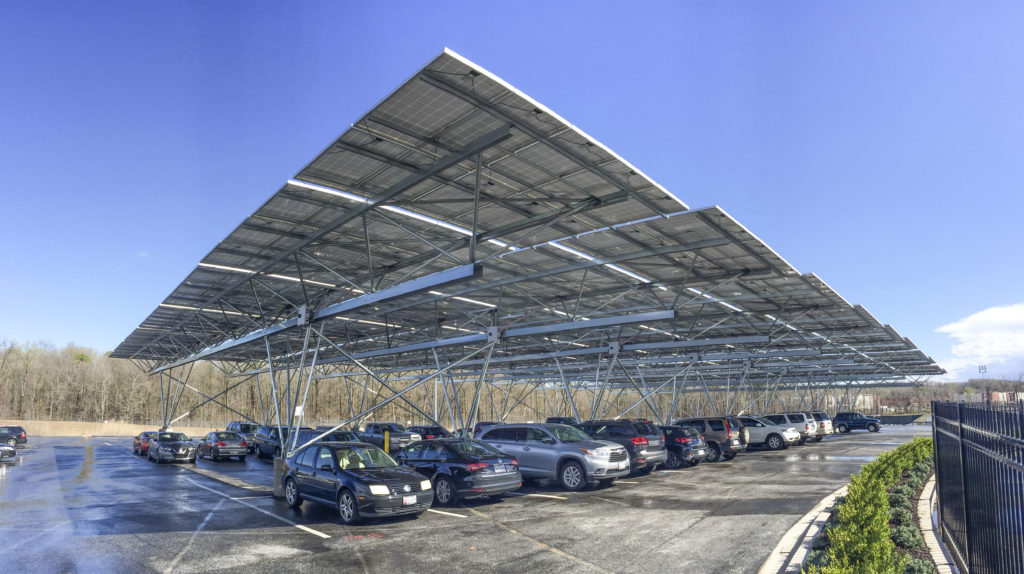This article written by Quest Renewables’ CEO, Norman (Finn) Findley, was published in Solar Power World.
Many of the most forward-thinking state-based solar incentives provide huge financial enticements for distributed generation development. In many jurisdictions, utilities support these incentives because they are a cost-effective way to defer much-needed electrical infrastructure upgrades to prevent rolling blackouts, brownouts, or cascading shutdowns of the grid. For solar project investors, the high rates that the utilities pay for this power makes the projects appealing.
Conventional thinking says the most cost-effective solution for distributed generation is rooftop solar, but what do you do if you can’t produce as much power as you would like on the rooftop of a building? In the past, folks settled for a smaller system because solar carports were too complicated and expensive. This antiquated way of thinking is why carports aren’t a bigger part of the solar mix, even in the face of favorable incentives that support their development.
The challenge with commercial solar carport projects is lack of optimization. Manufacturers of each link in the value chain seek to minimize their cost as a component of the system. Module manufacturers work to lower cost-per watt of their modules; inverter manufacturers do the same, and racking companies work with their supply chain to lower the cost of their raw materials. Nobody is looking at the entire solar installation process in an integrated way, until now.
At Quest Renewables, we use a high-fidelity process analysis originating from our award-winning Department of Energy research grant to optimize the total installation process, and therefore total cost, of solar carport projects. Here are two of the many examples of how this thinking benefits everyone involved in a solar project:
- Quest’s commercial solar carports are constructed on the ground and then lifted in-place with a crane. Adding the cost of a crane is, initially, counter-intuitive. But our analysis shows that for every penny per watt you spend on a crane, you save between 7 and 10 cents per watt in installation labor. This is universally true across the country, in every geographical area our projects have been installed.
- Quest’s commercial solar carports have much longer spans between foundations than other solar carports. In older designs, long-span systems required an increase in metal that became a diminishing return very quickly. This is even more true in this time of high steel prices, and lower costs for other components. Our patented space-frame technology enables long-spans without increasing the amount of steel. As a result, Quest’s solar carports are able to support more wattage on fewer foundations. Typically, our foundation counts are 50% lower than the older designs, and result in about a 30% reduction on total foundation costs. Again, this has proven true in every geographical area we’ve seen our system installed. In situations where soils are marginal, foundation costs are even more substantially reduced as compared to older systems.
Statistics tell us there are as many as 2 billion parking spaces in the United States, and that 1/3 of all available public parking spaces are in parking lots. Parking lots are widespread, and they make ideal locations for distributed power production as an add-on to their primary function as parking lots. As developers begin to see the benefits of optimizing parking lots with distributed generation, solar carports will continue to gain traction in the commercial solar carport market. Due to the growing carport market, racking manufacturers are becoming creative in their product offerings with add-ons that increase functionality for the site owner and increase margins for the solar installers.
